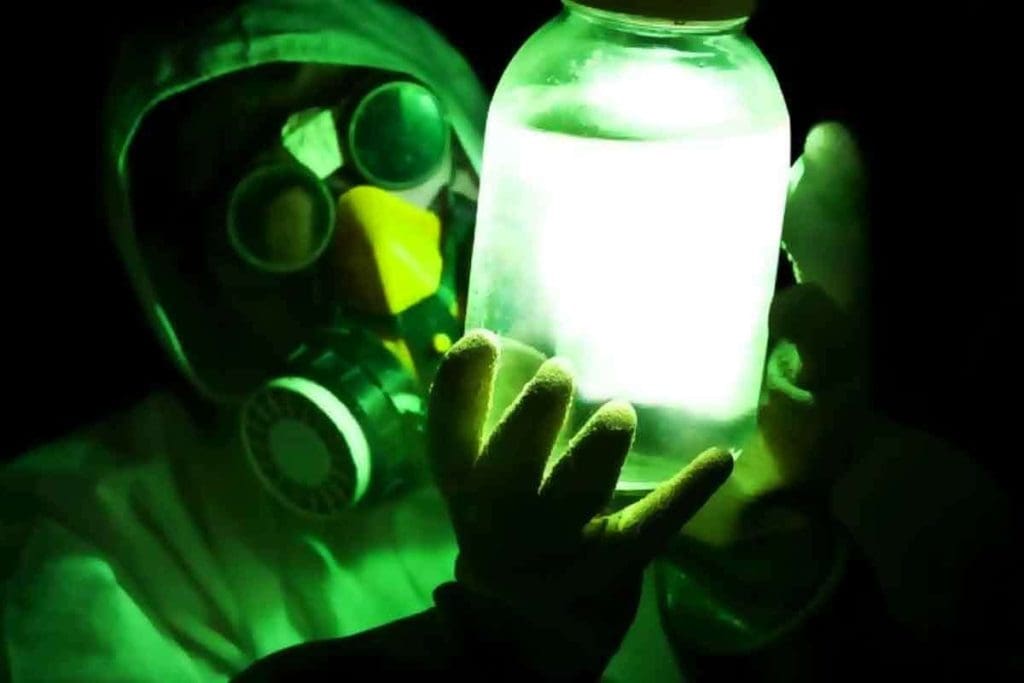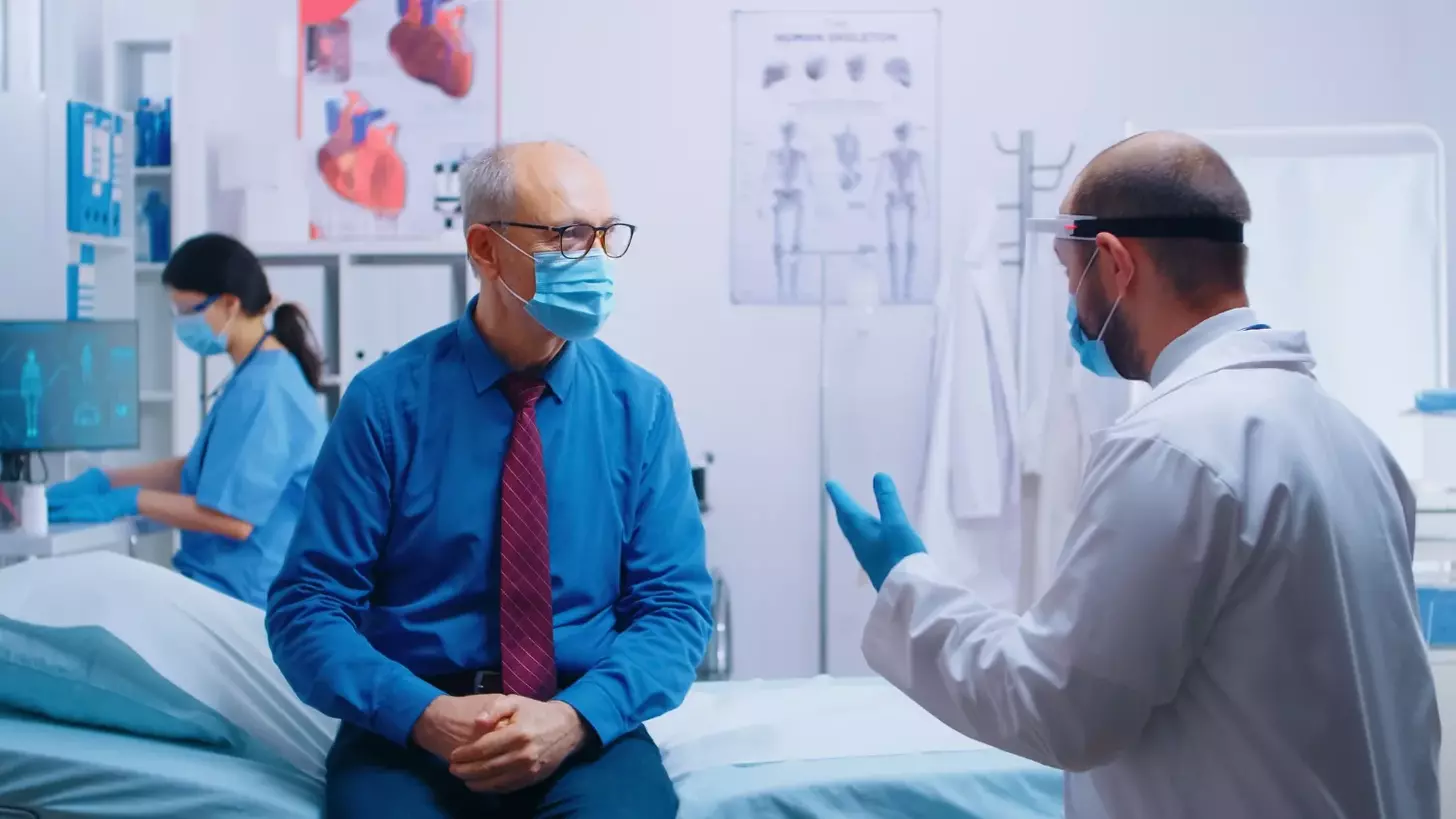Last Updated on November 27, 2025 by Bilal Hasdemir

Radiation is everywhere, playing a big role in medical tests and science. At Liv Hospital, we focus on trust and safety. We use advanced radiation science to give top-notch care. A sample of radiation includes X-rays used in imaging and radioisotopes used in cancer treatment. Understanding radiation is key to seeing its role in healthcare.
Radiation is the release of energy as waves or particles. It’s both interesting and complex. It includes alpha, beta, neutrons, and electromagnetic waves like gamma rays. To learn more, check out the Nuclear Regulatory Commission’s educational resource. We’ll look at 10 examples that show how important radiation is in today’s healthcare.
Key Takeaways
- Radiation is a key part of medicine and science.
- There are many types of radiation, each with its own features.
- Knowing about radiation helps us see its role in healthcare.
- Radiation shows up in our daily lives, from background radiation to medical scans.
- Liv Hospital puts patient safety and trust first when using radiation science.
The Science of Radiation: Energy in Motion

Radiation science covers many types of energy and how they interact with matter. It’s all around us, from the sun’s rays to medical treatments. These are just a few examples of how radiation affects our lives.
Defining Radiation as Energy Emission
Radiation is energy that moves as waves or fast particles. It falls into two main types: non-ionizing and ionizing. Non-ionizing radiation, like radio waves, can make atoms vibrate but not remove electrons.
Ionizing radiation, such as X-rays, has enough energy to remove electrons. This can harm living cells and DNA.
Waves vs. Particles: The Dual Nature of Radiation
Radiation is fascinating because it can act as both waves and particles. This is a key idea in physics. It shows how radiation can change its behavior based on the situation.
For example, light can act as a wave in some experiments and as particles (photons) in others. This dual nature helps us understand different types of radiation. It’s important for science and technology.
Learning about radiation science is key to using its benefits safely. By studying radiation types and their uses, we see the balance between energy and matter in our world.
Alpha Radiation: Powerful but Easily Blocked

Alpha radiation is a strong type of radiation that’s also easy to block. It’s made up of alpha particles, which are high-energy helium nuclei. These particles come from the nucleus of an atom.
Alpha particles have 2 protons and 2 neutrons, making them positively charged. This charge helps them interact with matter but limits their range in dense materials.
What Makes Alpha Particles Unique
Alpha particles are special because of their large mass and charge. This makes them very effective at causing damage to cells if they get inside the body.
Key characteristics of alpha particles include:
- High ionization power
- Short range in air and dense materials
- Can be stopped by a sheet of paper or human skin
Even though they can be stopped by thin barriers, alpha particles can be dangerous inside the body. For example, radon gas, a natural source of alpha radiation, can build up in enclosed spaces and be harmful.
Radon Gas: The Leading Source of Natural Alpha Radiation
Radon gas is a radioactive gas that naturally enters buildings from the soil. It’s the main source of natural alpha radiation for most people.
| Source | Alpha Radiation Exposure | Health Risk |
| Radon Gas | High | Lung Cancer Risk |
| Radon Progeny | High | Lung Cancer Risk |
| Other Natural Sources | Low to Moderate | Varies |
To lower the risks from radon gas, it’s key to check its levels in homes and workplaces. This is important in areas known to have high radon levels.
Knowing about alpha radiation and its sources helps us manage risks. By understanding where alpha radiation comes from, like radon gas, we can take steps to reduce our exposure and health risks.
Beta Radiation: Electrons and Positrons in Action
Beta radiation is made up of fast-moving electrons or positrons. It’s important in nature and in medical treatments. When an atom’s nucleus emits a beta particle, it can be an electron or a positron. This happens during certain types of radioactive decay.
Carbon-14: A Natural Beta Emitter
Carbon-14 is a well-known natural source of beta radiation. It’s formed in the atmosphere when nitrogen-14 is hit by cosmic radiation. This makes carbon-14 a constant in all living things. It decays into nitrogen-14 by emitting an electron.
Because of carbon-14, scientists can date old materials. They use a method called radiocarbon dating. This method measures the carbon-14 left in a sample to figure out its age.
Medical Applications of Beta Radiation
Beta radiation is used in medicine for both diagnosis and treatment. In nuclear medicine, beta-emitting radiopharmaceuticals help with imaging and treatment of diseases. For example, it’s used to treat thyroid disorders and certain cancers.
One big plus of beta radiation in medicine is its precision. It can target a specific area, reducing harm to healthy tissues. This is very helpful in cancer treatment, aiming to kill cancer cells without harming nearby tissues.
Gamma Radiation: The Most Penetrating Rays
We look into gamma radiation, a type of electromagnetic wave that can go through many things. It comes from atomic nuclei during certain radioactive decays. This makes gamma radiation special because it can go through materials that stop other types of radiation.
Cobalt-60: A Powerful Gamma Source
Cobalt-60 is a man-made radioactive isotope of cobalt with a 5.27-year half-life. It emits gamma rays at 1.17 and 1.33 MeV. Cobalt-60 is used in medicine, industry, and research because of its gamma emission.
Cancer Treatment Through Gamma Knife Surgery
Gamma Knife surgery is a precise radiation therapy for brain disorders, including cancer. It uses gamma radiation to target and destroy areas, protecting healthy tissue. This method is great for treating hard-to-reach tumors or those near important brain areas.
For more on radiation types, including gamma, visit Types of Emissions.
| Application | Description | Benefits |
| Medical Treatment | Gamma Knife surgery for brain tumors and disorders | High precision, minimal damage to surrounding tissue |
| Industrial Use | Radiography for inspecting welds and material defects | Non-destructive testing, high energy penetration |
| Research | Studying material properties under radiation | Understanding radiation effects, developing new materials |
In conclusion, gamma radiation’s ability to penetrate makes it useful in many fields, like medicine for Gamma Knife surgery. Knowing about gamma radiation and its sources, like Cobalt-60, is key to using it safely and effectively.
X-Rays: Seeing Inside the Human Body
X-ray technology lets doctors look inside patients without surgery. X-rays are a special kind of radiation used for medical checks. They show bones, teeth, and other inside parts, helping find many health problems.
Diagnostic Imaging in Modern Medicine
Diagnostic imaging is key in today’s medicine. X-rays are very helpful in emergencies when fast diagnosis is needed. They spot breaks, misalignments, and objects inside the body. X-rays also help in special imaging like fluoroscopy, showing what’s inside in real time.
X-ray tech helps guide medical actions, like putting in catheters or stents. Seeing inside the body in real time makes these actions safer and more precise.
Dental X-Rays and Their Benefits
Dental X-rays are vital for teeth health. They find problems not seen in regular checks, like hidden cavities or issues under fillings. Dental X-rays also spot gum disease, abscesses, and jawbone problems.
Dental X-rays catch problems early, track kids’ teeth growth, and check denture fits. Digital X-ray tech cuts down radiation while keeping image quality high.
We keep making X-ray tech better, getting clearer images with less radiation. This helps us diagnose and treat health issues better.
Neutron Radiation: The Uncharged Particle
Neutron radiation is a form of ionizing radiation made of free neutrons from nuclear reactions. It doesn’t directly ionize like alpha, beta, or gamma radiation because neutrons have no charge. But, it can cause other types of radiation to be released, which is important in many nuclear processes.
Nuclear Reactors as Neutron Sources
Nuclear reactors are a main source of neutron radiation. They work by keeping a controlled nuclear fission chain reaction going. This reaction releases a lot of neutrons. Nuclear reactors are built to manage and control the neutron flow. They are not just for power but also for studying neutron radiation and its uses.
We use these reactors to learn about neutron radiation and how it affects materials. The controlled setting of a nuclear reactor lets us measure neutron flow and energy spectrum accurately. This is key for both research and practical uses.
Neutron Activation Analysis in Research
Neutron radiation is also used in neutron activation analysis (NAA). NAA is a method to find out what elements are in a lot of materials. When a sample is hit with neutron radiation, the atoms absorb neutrons and become radioactive. They then emit gamma rays that can be measured to figure out what elements are there.
Neutron activation analysis is very useful in fields like archaeology, geology, and environmental science. Knowing the elemental makeup of samples helps us understand their history, origin, or environmental impact.
By using neutron radiation and NAA, we can learn a lot about materials that would be hard or impossible to study other ways. This shows how important neutron radiation is for understanding our world.
Cosmic Radiation: Energy from the Stars
The Earth’s atmosphere is always hit by cosmic radiation. This energy comes from the stars. It’s not just interesting but also key to knowing the dangers of space travel.
Penetration of Cosmic Rays into Earth’s Atmosphere
Cosmic rays are high-energy particles from outside our solar system. They can go deep into our atmosphere. There, they meet atoms and molecules, creating more particles.
Mechanism of Penetration
When cosmic rays hit atmospheric nuclei, they start a chain reaction. This interaction is important for our atmosphere’s chemistry. It also shows the dangers of cosmic radiation.
Impacts on Space Travel and Astronaut Health
Cosmic radiation is a big risk for astronauts and space equipment. It can cause cancer, harm the brain, and other health problems. This is because of long exposure to cosmic rays.
Health Risks and Mitigation Strategies
| Health Risk | Mitigation Strategy |
| Cancer Risk | Shielding, Monitoring Exposure |
| Central Nervous System Damage | Shielding, Limited Exposure Time |
| Electronic Equipment Failure | Shielding, Redundancy in Systems |
It’s vital to understand and fight cosmic radiation for long space trips. By creating good shields and keeping an eye on exposure, we can lower the risks. This helps make space missions safer.
Ultraviolet Radiation: Beyond Visible Light
The sun sends out many kinds of radiation, including ultraviolet (UV) radiation. This radiation has both good and bad effects on our world and health. Studying UV radiation is key for understanding our environment, health, and technology.
The Sun as Our Primary UV Source
The sun is the main source of UV radiation. It sends out a wide range of electromagnetic waves, including UV-A, UV-B, and UV-C. While most UV-C and some UV-B is blocked by our atmosphere, UV-A gets through deeper, affecting our skin and the environment.
UV Applications in Sterilization and Disinfection
UV radiation has many uses, like in sterilizing and disinfecting. It’s used in hospitals, water treatment, and air cleaners to kill germs. This makes UV a powerful tool for keeping us safe and healthy. For more on radiation types and sources, check out this resource.
UV radiation is also used in many other ways, like curing inks and in forensic science. Its wide range of uses shows how important UV technology is today.
Collecting and Analyzing a Sample of Radiation
Detecting and analyzing radiation needs special tools and careful steps. We use top-notch technology to get accurate readings. This is key for science, medicine, and industry.
Radiation Detection Instruments
Many tools help detect radiation, each with its own uses. Geiger counters are popular for finding gamma radiation and X-rays. They give quick results, which is great for keeping things safe.
Scintillation detectors are for more detailed work. They turn radiation into light, which we then measure. This lets us know how strong and what kind of radiation it is. They’re very sensitive and used in lots of studies and medical fields.
| Instrument | Primary Use | Key Features |
| Geiger Counter | Gamma radiation and X-ray detection | Portable, immediate readings |
| Scintillation Detector | Precise radiation measurement | High sensitivity, measures intensity and energy |
Laboratory Protocols for Radiation Measurement
Our lab rules for measuring radiation are strict. We make sure everything is done right, safely, and accurately. This includes calibrating tools, preparing samples, and analyzing data.
“The accuracy of radiation measurement is key in medicine. It affects how we diagnose and treat patients.”
” Dr. Jane Smith, Radiation Oncologist
Calibration checks if the tool works right by using known sources. Preparing samples might mean filtering or focusing them to make them easier to detect. Then, we look at the data to figure out the radiation levels and types.
By using the best tools and following strict lab rules, we get precise radiation measurements. This helps us in research, improves medical care, and keeps us safe from radiation.
Natural vs. Man-Made Radiation Sources
We are surrounded by radiation from different origins. This includes natural background and human-made technologies. It’s important to understand this duality to grasp the overall radiation exposure we face.
Earth’s Background Radiation
Natural radiation is a part of our environment. It comes from the earth’s crust, cosmic rays, and radon gas. Radon is a big part of natural radiation, found in places like homes and mines. The level of radon varies by location, depending on the soil’s uranium and thorium levels.
The earth’s background radiation is a global issue. It affects everyone. Cosmic rays from space also add to this background. Their strength changes with altitude and latitude. Knowing about these natural sources helps us find ways to reduce their effects.
Medical and Industrial Radiation Technologies
Man-made radiation sources mainly come from medical and industrial uses. Medical technologies like X-ray machines and radiotherapy equipment are key for diagnosis and treatment. They have greatly improved healthcare by allowing for precise diagnoses and treatments.
Industrial uses of radiation include non-destructive testing and sterilizing medical instruments. These technologies are very useful but need careful handling to avoid radiation exposure. We must weigh their benefits against the risks.
By knowing about both natural and man-made radiation, we can manage exposure better. This helps us use radiation for medical and industrial progress.
Conclusion: Radiation’s Role in Modern Science and Society
Radiation is key in our world, used in medicine, science, and industry. We’ve looked at radiation science examples like alpha, beta, and gamma radiation. We’ve also talked about X-rays and cosmic rays. Knowing about these types helps us use them safely and wisely.
Radiation is important in many areas. It’s used in cancer treatments, in industry, and in research. We’ve seen what are examples of radiation all around us. From natural background radiation to medical imaging, it’s everywhere. Learning about radiation examples science is important for our safety and progress.
At Liv Hospital, we focus on top-notch healthcare and patient support. By understanding radiation, we can help our patients more. We’re excited to keep exploring radiation’s possibilities. Our goal is to give the best care and advice for advanced medical treatments.
FAQ
What are some examples of radiation?
Radiation types include alpha, beta, gamma, X-ray, ultraviolet, and cosmic radiation. They are found everywhere. They have uses in medicine, science, and industry.
What is the difference between ionizing and non-ionizing radiation?
Ionizing radiation, like alpha, beta, and gamma, can remove electrons from atoms. Non-ionizing radiation, such as ultraviolet and radio waves, cannot do this.
How is radiation used in medical treatments?
Radiation is used in medicine for many treatments. It’s used in cancer therapy, like Gamma Knife surgery. It’s also used in X-rays and beta radiation treatments.
What are the health risks associated with radiation exposure?
Radiation can harm us. It can increase cancer risk, cause genetic mutations, and lead to radiation sickness. The harm depends on the dose and type of radiation.
How is radiation detected and measured?
Special tools, like Geiger counters, spectrometers, and dosimeters, detect and measure radiation. They help us understand radiation levels and keep us safe.
What are some natural sources of radiation?
Natural radiation sources include radon gas, cosmic rays, and radiation from the Earth’s crust. They add to our background radiation.
How does cosmic radiation affect astronauts?
Cosmic radiation is a big risk for astronauts on long space missions. It can damage tissues and increase cancer and health risks.
What are some applications of ultraviolet radiation?
Ultraviolet radiation is used for sterilization, disinfection, and curing inks and adhesives. It’s good at killing bacteria and other microorganisms.
Can radiation be used for beneficial purposes?
Yes, radiation has many good uses. It’s used in medicine, industry, and science. It helps in cancer treatment, imaging, and food irradiation.
How can we minimize radiation exposure?
To reduce radiation exposure, use shields, follow safety rules, and limit time in high-radiation areas. These steps help keep us safe.
Reference
- Nuclear Regulatory Commission. (n.d.). What are the Different Types of Radiation? https://www.nrc.gov/reading-rm/basic-ref/students/science-101/what-are-different-types-of-radiation






